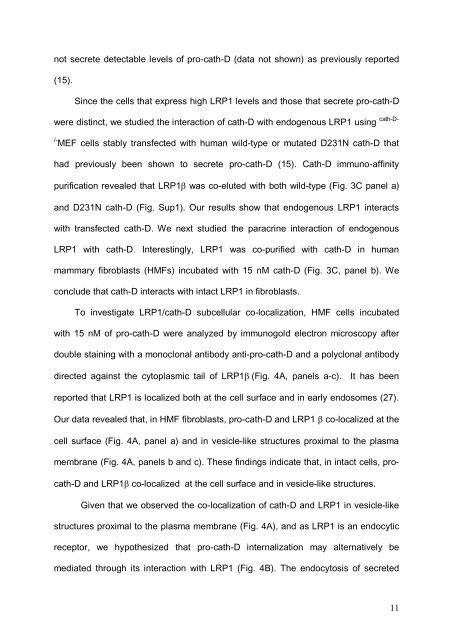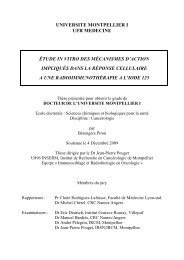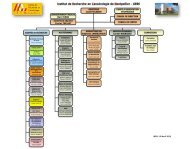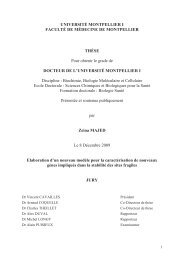Cancer du sein et micro-environnement tumoral: rôle de la protéase ...
Cancer du sein et micro-environnement tumoral: rôle de la protéase ...
Cancer du sein et micro-environnement tumoral: rôle de la protéase ...
Create successful ePaper yourself
Turn your PDF publications into a flip-book with our unique Google optimized e-Paper software.
not secr<strong>et</strong>e d<strong>et</strong>ectable levels of pro-cath-D (data not shown) as previously reported(15).Since the cells that express high LRP1 levels and those that secr<strong>et</strong>e pro-cath-Dwere distinct, we studied the interaction of cath-D with endogenous LRP1 using cath-D-/- MEF cells stably transfected with human wild-type or mutated D231N cath-D thathad previously been shown to secr<strong>et</strong>e pro-cath-D (15). Cath-D immuno-affinitypurification revealed that LRP1b was co-eluted with both wild-type (Fig. 3C panel a)and D231N cath-D (Fig. Sup1). Our results show that endogenous LRP1 interactswith transfected cath-D. We next studied the paracrine interaction of endogenousLRP1 with cath-D. Interestingly, LRP1 was co-purified with cath-D in humanmammary fibrob<strong>la</strong>sts (HMFs) incubated with 15 nM cath-D (Fig. 3C, panel b). Weconclu<strong>de</strong> that cath-D interacts with intact LRP1 in fibrob<strong>la</strong>sts.To investigate LRP1/cath-D subcellu<strong>la</strong>r co-localization, HMF cells incubatedwith 15 nM of pro-cath-D were analyzed by immunogold electron <strong>micro</strong>scopy afterdouble staining with a monoclonal antibody anti-pro-cath-D and a polyclonal antibodydirected against the cytop<strong>la</strong>smic tail of LRP1b (Fig. 4A, panels a-c). It has beenreported that LRP1 is localized both at the cell surface and in early endosomes (27).Our data revealed that, in HMF fibrob<strong>la</strong>sts, pro-cath-D and LRP1 b co-localized at thecell surface (Fig. 4A, panel a) and in vesicle-like structures proximal to the p<strong>la</strong>smamembrane (Fig. 4A, panels b and c). These findings indicate that, in intact cells, procath-Dand LRP1b co-localized at the cell surface and in vesicle-like structures.Given that we observed the co-localization of cath-D and LRP1 in vesicle-likestructures proximal to the p<strong>la</strong>sma membrane (Fig. 4A), and as LRP1 is an endocyticreceptor, we hypothesized that pro-cath-D internalization may alternatively bemediated through its interaction with LRP1 (Fig. 4B). The endocytosis of secr<strong>et</strong>ed11





